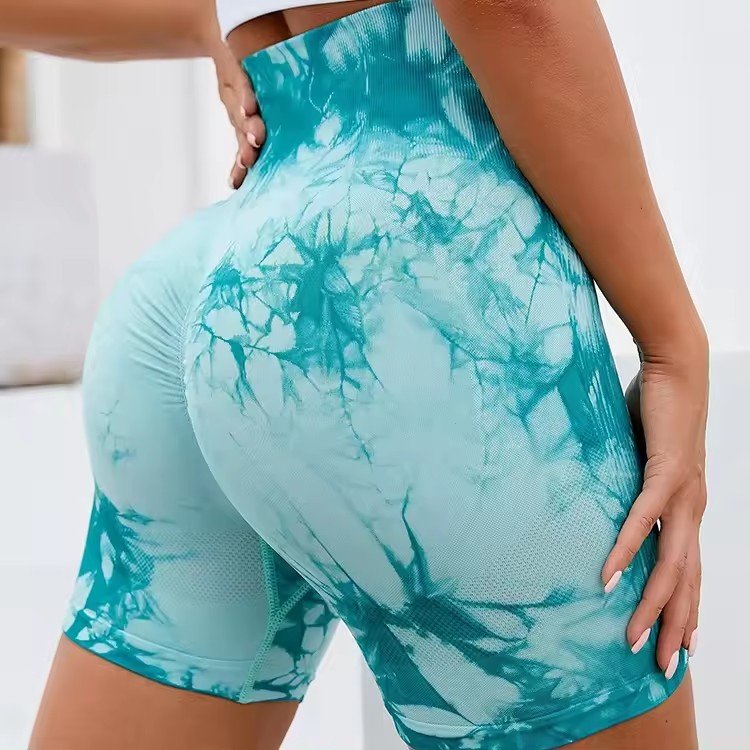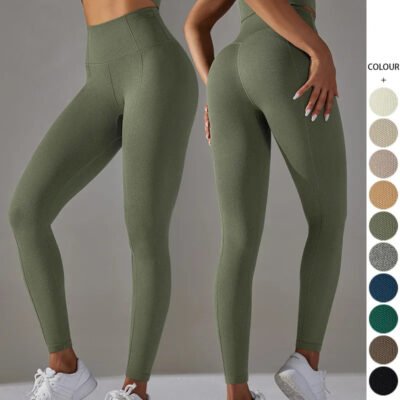Tie-dye yoga clothes have become a popular choice for those seeking both style and comfort in their workout attire. This unique pattern not only adds a vibrant flair to yoga wear but also carries a rich history and a meticulous production process that makes each piece a work of art.

The Origin of Tie-Dye
The tie-dye technique dates back thousands of years, with origins in various cultures across the globe. It’s a method of textile dyeing that involves folding, twisting, pleating, or crumpling fabric and binding it with string or rubber bands, followed by the application of dye. The earliest known use of tie-dye was in ancient Peru around 500 AD, where pre-Columbian artisans used it to create intricate designs on fabric. In Asia, particularly in India and Japan, tie-dyeing became a traditional craft. The Japanese form, known as Shibori, involved binding fabric in different ways to create elaborate patterns, while in India, the technique was often used in the making of bandhani, a type of dotted fabric.

Tie-dye made its way into Western fashion in the 1960s during the counterculture movement, symbolizing individuality and nonconformity. It was embraced by the hippie movement as a symbol of peace, love, and freedom. Today, it remains a beloved and timeless fashion trend, and its influence has permeated into the realm of yoga wear, merging the practice’s focus on mindfulness and self-expression with the artistic and spiritual essence of tie-dye.

The Production Process of Tie-Dye Yoga Clothes
Creating tie-dye yoga clothes involves several intricate steps, beginning with the selection of high-quality fabric, usually cotton, bamboo, or a blend of spandex and polyester, chosen for its stretch, comfort, and breathability—essential qualities for yoga wear.
- Fabric Preparation: The fabric is first washed to remove any impurities or sizing agents that could interfere with the dye absorption. This step ensures that the dye penetrates the fibers evenly, resulting in vibrant and lasting colors.
- Tying and Binding: The fabric is then tied, folded, twisted, or crumpled in various patterns. The way the fabric is manipulated at this stage determines the final design. Different techniques—such as spirals, stripes, or bullseyes—can be used to create specific patterns. The bound sections resist the dye, creating the characteristic tie-dye look with its distinctive, colorful patterns.
- Dyeing: After tying, the fabric is dyed using fiber-reactive dyes, which are ideal for cotton and other natural fibers. These dyes bond with the fabric at a molecular level, ensuring vibrant, long-lasting colors that can withstand repeated washing. The dye is applied in sections, either by dipping the fabric into dye baths or using squeeze bottles to control the application.
- Setting the Dye: Once the dye is applied, the fabric is left to sit, often in a warm environment, to allow the dye to set fully. This process can take several hours, depending on the type of dye and the desired intensity of the colors.
- Washing and Finishing: After the dye has set, the fabric is washed multiple times to remove excess dye. This step is crucial to prevent color bleeding during future washes. The fabric is then dried and often treated with a fixative to further lock in the colors. Finally, the fabric is cut and sewn into yoga wear, ensuring that each piece is comfortable, durable, and uniquely patterned.
Conclusion
Tie-dye yoga clothes blend the ancient art of textile dyeing with modern fashion sensibilities. The meticulous production process ensures that each piece is not only visually stunning but also functional, meeting the demands of rigorous yoga practice. The result is clothing that allows yogis to express their individuality while staying connected to the rich history of tie-dye, making their practice not just a physical experience, but an artistic one as well.







